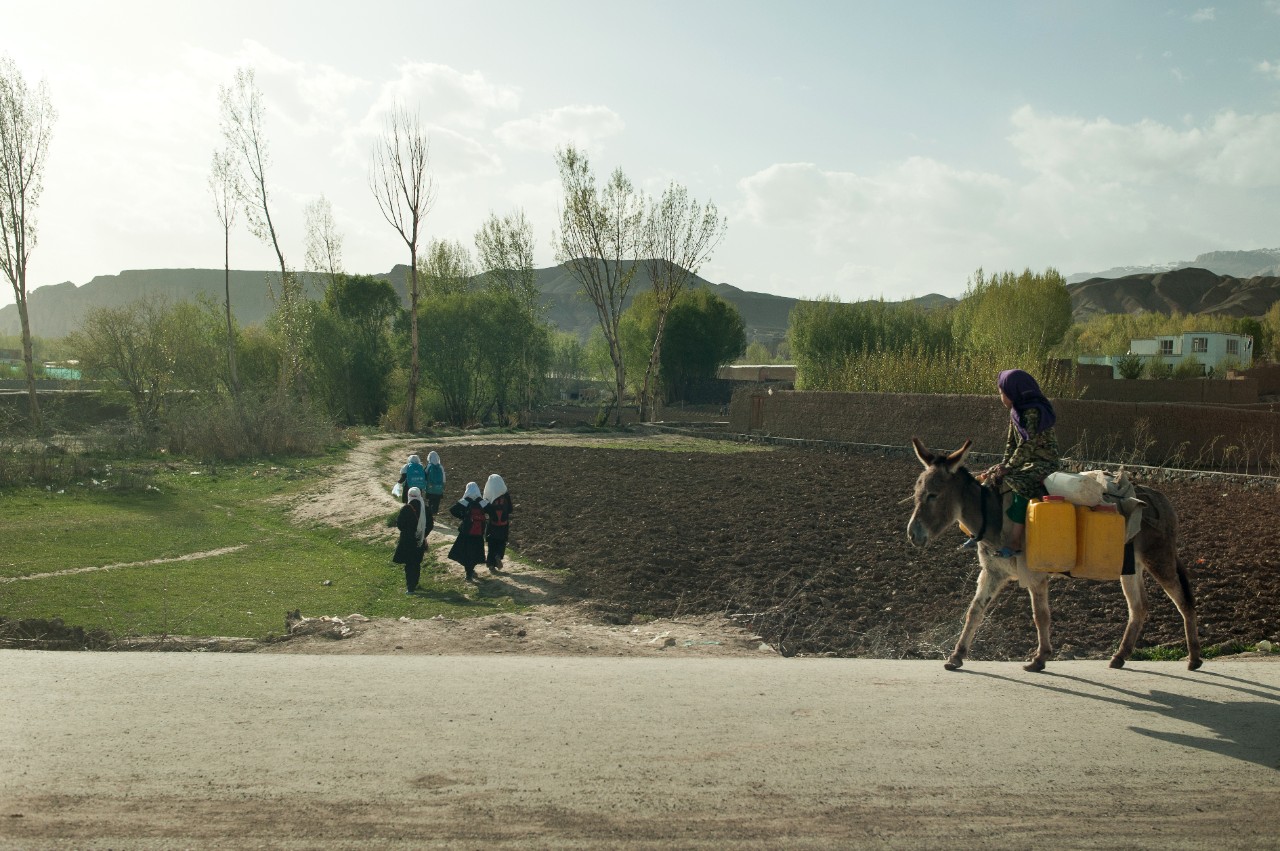Support to livelihoods and jobs essential to addressing cascading economic crises
UNDP report paints grim picture of Afghanistan a year after transition
October 5, 2022

With GDP in steady decline since 2008, Afghanistan had come to rely on international aid to sustain its economy, which accounted for 75 percent of total government spending and nearly 40 percent of GDP at the time of transition. But foreign donors largely suspended aid after the transition.
Kabul/New York —A year after the Taliban takeover in Afghanistan, the country faces “cascading crises” and a crippled economy that humanitarian aid alone cannot address, according to a new report by the United Nations Development Programme (UNDP).
The report calculates that the already-declining licit Afghan economy lost nearly US$5 billion after August 2021 and is reversing “in 12 months what had taken 10 years to accumulate.”
The cost of a basket of essentials needed to avoid food poverty has meanwhile risen 35 percent, forcing poorer households to go deeper into debt or sell off assets just to survive. Nearly 700,000 jobs have vanished, further threatening a population reeling from impacts of the COVID-19 pandemic, conflict, drought, and war in Ukraine.
“The Afghan people have been relentlessly subjected to extremely difficult circumstances. They have survived numerous challenges in the last 40 years and shown enormous resilience. Yet the last 12 months have brought cascading crises: a humanitarian emergency; massive economic contraction; and the crippling of its banking and financial systems in addition to denying access to secondary education to girls and the restrictions on women’s mobility and participation in the economy,” the report, “One Year in Review: Afghanistan Since August 2021,” concludes.
“Afghanistan has experienced an economic implosion over the past 12 months and the UN’s strong, coordinated response to the crisis has proved critical in averting a catastrophe last winter. Building upon what worked last year including tailored efforts across multiple sectors to improve the livelihoods of more than half a million people, there is a pressing need to support further measures to prevent a deeper crisis," said UNDP Administrator Achim Steiner. " We need to help Afghans cope with the coming winter including through our ABADEI programme which aims to support two million people with livelihood and job opportunities over the next two years with a focus on particularly vulnerable groups such as women entrepreneurs and young people."
Expanded connectivity, livelihoods, and rights needed
The report paints a bleak fiscal picture of the country, dating back more than a decade before the transition of August 2021. With GDP in steady decline since 2008, Afghanistan had come to rely on international aid to sustain its economy, which accounted for 75 percent of total government spending and nearly 40 percent of GDP at the time of transition. But foreign donors largely suspended aid after the transition.
With external financial support curtailed, Afghanistan must rely on limited domestic revenue from agriculture and coal exports. Authorities have sought to address revenue shortfalls by cracking down on corruption in key revenue streams, such as customs, and by reaching out to the private sector and foreign investors.
“Two decades of heavy dependence on international aid and imports, a lack of industrialization and competitiveness, and limited mobility and connectivity among regions, among other factors, have hindered Afghanistan’s forward momentum,” the report says.
UNDP analysis forecast that restricting women from working can result in an economic loss of up to US$1 billion – or up to five percent of the country’s GDP.
“The rights of women and girls are critical for the future of Afghanistan,” said UNDP Asia-Pacific Director Kanni Wignaraja. “It starts with education and continues with equal opportunity when it comes to employment and pay. UNDP made the support to women-owned businesses front and center of its aid activities: we provided support to 34,000 women-owned small businesses. Our goal is to reach 50,000 women-owned business by the end of this year.”
UNDP has launched, as part of the overall UN response to the crisis in Afghanistan, an area-based approach to development emergency initiatives, known as ABADEI. This means working directly with Afghans in need at the community level through cash-for-work projects, local market stimulation, and livelihood schemes to improve food security. UNDP will also support a series of programmes that facilitate the rebound of private sector and financial services, technical and vocational education, solar power generation, and health systems management and service delivery.
“We are grateful for the $300 million in funding provided for our work on livelihoods as part of the overall crisis response in Afghanistan, but much more is needed for economic recovery,” UNDP Resident Representative Abdallah Al Dardari said. “Afghans are running out of time and resources. Afghanistan needs support from the international community to bring back to life local markets and small businesses which are the backbone of Afghanistan’s economy.”
Key findings in the report, “One Year in Review: Afghanistan Since August 2021”:
- The price of a food basket, with the minimum calories to escape food poverty, has surged 35 percent since August 2021.
- Nearly 700,000 jobs were lost by mid-2022.
- Among jobs women have lost in government ministries and entities, more than 14,000 or 82 percent were in the Ministry of Education, following restrictions on girls’ education.
- A shrinking licit economy has increased the share of the illicit economy to 12-18 percent of GDP, from about 9-14 percent a year ago.
- A severe liquidity crisis has affected financial services; the microfinance sector has nearly collapsed, hitting poor and female borrowers hardest.
- Nearly 20 million people face high and critical levels of food insecurity since August 2021, almost twice the average in the preceding three years.
- Children under five face a serious threat of severe acute malnutrition, particularly in the south.
For more information:
Won-Na Cha, Communications Specialist in Kabul: wonna.cha@undp.org
Stanislav Saling, Communications Specialist in New York: stanislav.saling@undp.org

 Locations
Locations

